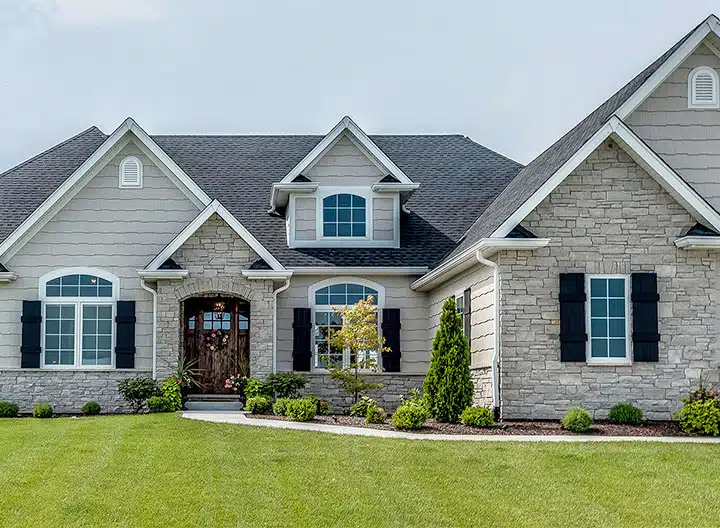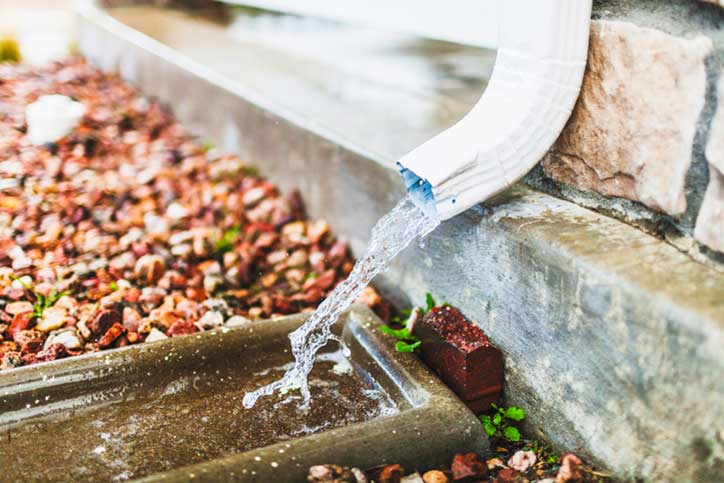Gutters are noticeable. They run right along the roofline and impact a home’s overall curb appeal. You can see water running from the roof to the gutters, but where does it go after that? Where do gutters drain to, and what happens if they’re not draining properly? Read on to learn more about how gutters work.
Downspouts Carry Water from the Gutters to the Ground
The downspouts are the vertical pieces of the guttering that direct water from the gutters to the ground. The gutters are in charge of the initial water collection, but all that water has to go somewhere. Most gutters are slightly angled so water runs toward the downspouts. You may not notice the slope when you look at the gutters, but it ensures water doesn’t pool up in the middle of the guttering.
Common Places Where Gutters Drain to
Once the water reaches the ground, there are several places it may drain to. These include:
- French drains, which are built into the ground to carry water away from the property
- Garden beds and landscaping
- Water features (river rock gutter drains)
- Other guttering, in the case of multi-story buildings
- Hills and slopes on the property that lead out to the street
- Flexible drainage pipes and splash blocks that sit directly under the downspouts
- Underground sewer systems, common in some areas
- Straight to the ground (not ideal)
Gutters should be designed with drainage in place. One of the biggest benefits to having gutters is that you can keep water from pooling by your foundation. At Sargent Gutters & Siding, we take this into consideration to recommend the best gutter design plan for your home.
Signs Your Gutters Are Not Draining Properly
If you notice water pooling around your foundation or underneath your downspouts, you may need to address the drainage routes from the gutters. If the gutters are sagging or overflowing with water when it rains, you may need new gutters or additional downspouts to handle the water volume. If the water runs off the roof and bypasses the gutters completely, they probably aren’t in the right position.
We can evaluate all of these issues during your gutter inspection and determine if you need new gutters, gutter repair or gutter replacement.
How to Maximize the Efficiency of Your Gutters
Keeping your gutters clear of clogs is the best way to maximize their efficiency. You can achieve this in a few different ways:
- Get a thorough gutter cleaning service at least two times a year. You may need cleanings in between those two services, depending on the trees on your property and the state of the gutters.
- Trim overhanging branches to limit debris in the gutters.
- Use gutter guards to keep leaves and pine needles from sitting inside the gutters.
- Upgrade to seamless gutters and downspouts if you have an outdated guttering system.
- Monitor the property for unmanaged water, and complete gutter repairs in a timely manner.
If you’re worried about your gutter drainage, call Sargent Gutters & Siding for a professional gutter inspection. You may reach us at (800) 465-7460.




